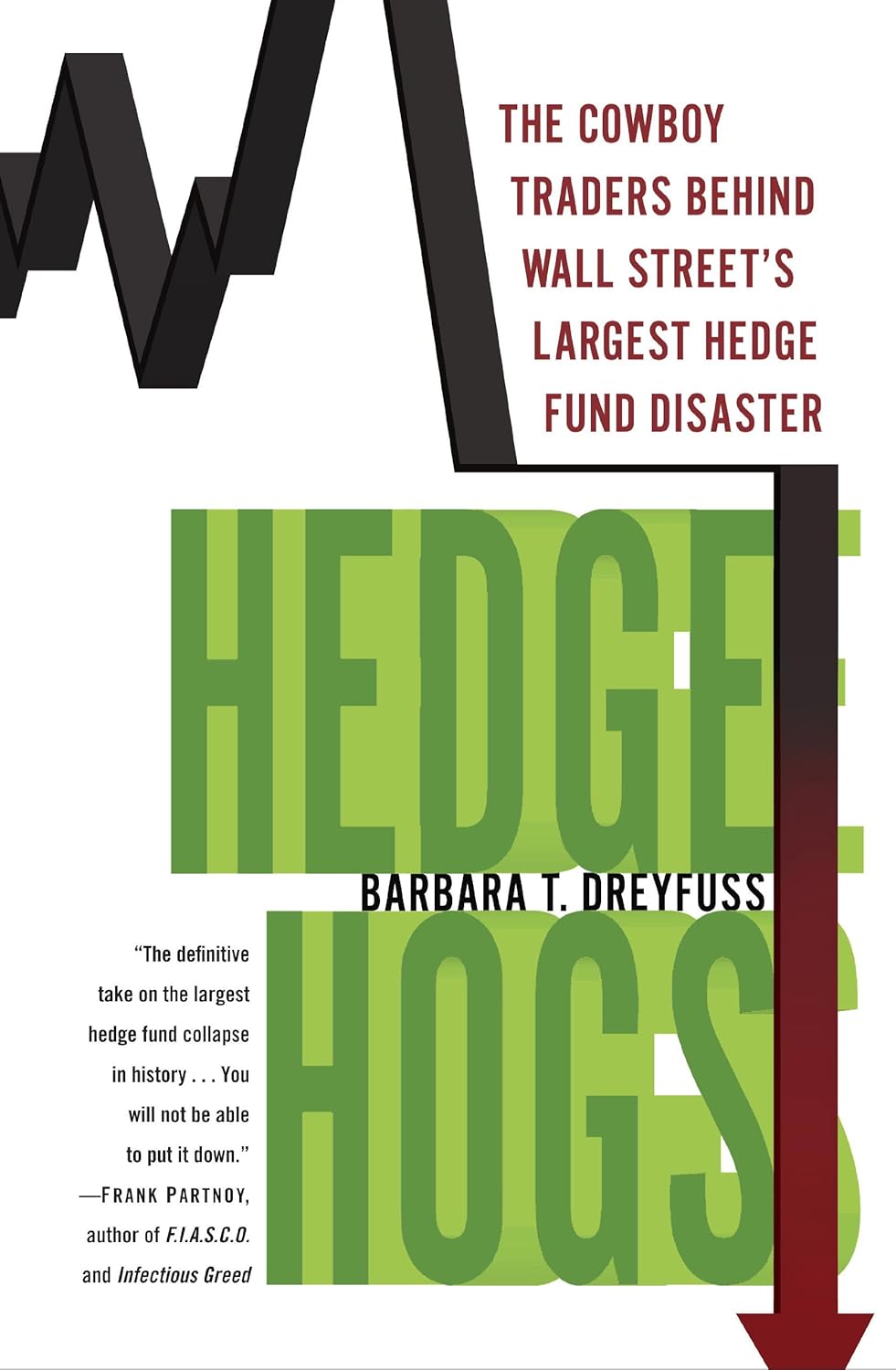A reflection after reading Barbara Dreyfuss’s book, Hedge Hogs: The Cowboy Traders Behind Wall Street’s Largest Hedge Fund Disaster

To determine if you are truly compounding wealth over the long term, two questions are paramount:
-
Is your strategy still valuable ten or twenty years from now? If not, you may be just struggling, not truly growing.
-
Does your strategy harbor a hidden, catastrophic risk? If so, no matter the short-term gains, you are engaged in a gamble that is destined to fail.
Most flawed investment approaches can be traced back to failing to answer these questions honestly. This often happens in two ways: a lack of patience, which prevents building a real advantage, or a rush for quick success, which leads to ignoring low-probability but devastating risks.
The 2006 collapse of Amaranth Advisors, a hedge fund that once managed over $9 billion, is a perfect real-world illustration of these principles.
Case Study: The Cowboy Trader and the Illusion of Genius
Amaranth’s spectacular rise and fall were driven by a brilliant young natural gas trader named Brian Hunter.
-
The Strategy: In 2005, Hunter used massive leverage to bet on a rise in natural gas prices.
-
The Catalyst: When Hurricane Katrina struck, it destroyed energy infrastructure, and prices skyrocketed.
-
The Payoff: The bet earned the fund over $1 billion and secured Hunter a personal bonus of $113 million.
The key to this outsized gain was the immense and dangerous size of his position. By the time of the fund’s collapse, Amaranth’s position in natural gas had grown to an astonishing level.
-
Market Dominance: The fund held over 40% of the entire market on the New York Mercantile Exchange (NYMEX).
-
Extreme Volatility: A mere 10-cent move in gas prices could result in a $150 million gain or loss.
-
The Hidden Flaw: His position was so large it was profoundly illiquid. His paper profits were a mirage that would vanish the moment he tried to sell.
The Death Spiral 📉
That is precisely what happened. In late August 2006, a single bet gone wrong triggered a catastrophic chain reaction.
-
The Trigger: On August 29th, the fund lost $600 million in a single hour.
-
The Margin Call: This immediately triggered a $1.5 billion margin call from brokers.
-
The Collapse: Amaranth was forced to sell its assets to raise cash.5 This selling pressure pushed prices further against them, triggering more losses and more margin calls until the fund completely imploded.
By the end of September, investors had lost 60% of their capital, and the fund’s assets had cratered from over $9 billion to under $3 billion.
Lesson 1: The Wisdom to Walk Away
In 2005, Hunter’s trades accounted for 98% of Amaranth’s profits. While many were enticed, Larry Fink, the founder of BlackRock, was alarmed. His reaction captures a fundamental principle of risk management:
“When you see aberrant success, you have to ask, did I take too much risk?”
In early 2006, BlackRock paid a 3% penalty to withdraw its investment from Amaranth, choosing the certainty of a small loss over the possibility of a catastrophic one.
Lesson 2: The Peril of Chasing Returns
The San Diego County Employees’ Retirement Association (SDCERA), a pension fund, was one of Amaranth’s largest victims.
-
The Pressure: SDCERA needed to generate an 8.25% annual return to meet its obligations.
-
The Gamble: They invested $175 million in Amaranth in 2005.
-
The Result: After the collapse, their investment was worth only $70 million—a 60% loss.
The retirees’ desperate search for higher returns ultimately made them the source of someone else’s.
Lesson 3: Survival is Everything
Because Hunter’s positions were so large, he created massive distortions in the market. While smaller funds betting against him were wiped out, another star trader, John Arnold, had the financial capacity to withstand the short-term pain.
He held his position against Amaranth until the very end. When the fund collapsed, his own fund returned over 300% for the year, earning him nearly $2 billion. The lesson is stark: being right is not enough; you must have the capital to survive until your thesis is proven correct.
The Final Accounting
After the collapse, Brian Hunter was sued by federal regulators for market manipulation and was eventually fined $30 million. When one considers taxes, legal fees, and the fine, his incredible winnings were substantially eroded.
The story of Amaranth reveals that the immense pressure for short-term gains is an inescapable feature of the financial world. Understanding this is a profound advantage. True, sustainable growth is found not in the frantic chase for immediate profits, but in patiently waiting for the opportunities that emerge when those who embrace ruinous risk are inevitably forced to fold.

